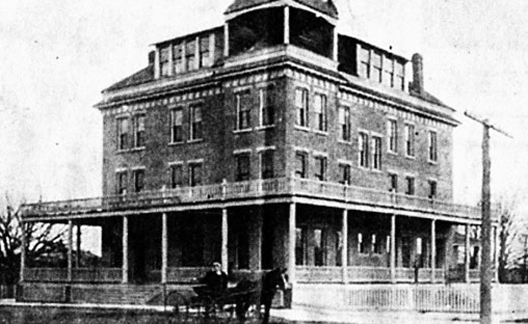Historic Hotels
By Joshua Heston with Dale Grubaugh
Hotels, in days gone by, created a unique focal point in the community, often far beyond our modern day Motel 6s and Hampton Inns. A local meetin’ place, a respite from heat and cold, at times barbershop, other times hospital, these looming stone, brick or pine-and-oak structures would dominate a small town square.
But such buildings were rarely designed for modernization. Few bathrooms, narrow stairways, no air conditioning. The 1950s would see a dramatic shift away from the downtown square’s hotel to “motor hotels” a term shortened to “motel,” a place convenient not because it was near the railroad station or livery stable but because we could park our Fords and Chevrolets right out the front door.
Some grand old hotels in the Ozarks have been restored to their former beauty. Most have not, often becoming flophouses before their sad demolition.
Another piece of history gone.
June 18, 2013
Grand View Berryville
by Joshua Heston
In the rolling countryside of Carroll County — high in the alpine region of northwest Arkansas — the busy town square of Berryville saw the opening of an imposing new hotel, first called The Saint George. The year was 1902. It must have been an exciting time — the opening celebrations included a special excursion train arrival at the Berryville depot as well as a gala in the grand ballroom.
Contructed of locally made Carroll County bricks forming walls 19-inches thick, with deep porches framing the first floor and its soaring 12-foot ceilings, the hotel was an impressive sight on the square. There were over 20 guests rooms — and two baths. Lumber for the building? Then plentiful old-growth pine and oak, felled from local forests.
There were a slew of owners in those first years — first F.M. O’Neal of Green Forest (1902 to 1905), then H.D. Case (1905 to 1909) who sold rooms for $2.00 a day, then J.P. Whiteley (1909) and M.M. Hoagland (1910).
Not just an important building in Berryville, the Grand View Hotel (as it was renamed sometime between 1915 and 1925) was one of the most important buildings in northwest Arkansas. Governors and senators stayed here. A thriving agricultural economy drove the region and the town was home to a canning factory and a local toy factory. The city, which had been founded in 1850 by Blackburn Henderson Berry, had found its post-Civil War stride in the early days of the 20th century.
In a pre-air-conditioned nation, the Grand View was profitably billed as a place to escape the smothering heat of the big city. It was where travelers could breathe the fresh mountain air and drink the healing spring water. Those thick brick walls and deep-shaded porches provided shade and cooling breezes in the hottest of summers.
In 1910, M.M. Hoagland added broad porches and balconies to every floor.
In addition to travelers and dignitaries, the Grand View served as an unofficial hospital. The Berryville doctor’s office was across the square and above the drug store. If someone was sick, the doctor might tell them to get a room in the Grand View.
S.C. Stokes operated the hotel for several years (1912-1916), then for 10 years Mrs. A.J. Morrow ran the place. In 1926, Mr. and Mrs. L.C. Smith took up responsibility for the Grand View (renaming it Grandview) until the now-widowed Mrs. Smith sold the place to Dr. John H. Bohannan in 1943.
Dr. Bohannan hired Mr. and Mrs. John Emmett of Green Forest as managers. During the 1950s, a “modern” commercial storefront was added, replacing the sprawling front porches. The balconies were torn down.
The Emmetts ran the now-aging Grand View until its closing sometime in the 1970s.
In 1984, the now-empty building was purchased by Phillis and Carl Loehr. The Loehrs worked hard to bring the hotel up to modern standards before apparently losing their way.
As the decades marched on, the Grand View became forlorn. Windows were boarded up. Carl Loehr still lived in the building, but was now gathering — and hoarding — items in an attempt to turn the building into a museum. Broken windows allowed pigeons to nest freely, particularly in the kitchen beyond the grand ballroom. An unattended deep fat turkey fryer blew up, searing the front room of the hotel — now known as the Chandelier Room (Plates 5, 6).
In 2005, Alexander Virden and partner Sandra Doss bought the hotel in the hopes of restoring the Grand View to its original greatness and opening an art school as well.
Virden, a former Navy machinist mate and commercial diver, writer and longtime New Orleans native, had always dreamed of a historic place where the arts could flourish.
He believed Berryville was that place, despite the daunting task of repair. Every room of the hotel was filled, floor-to-12-foot-ceiling, with junk. “We found 40 or 50 broken vacuum cleaners spread throughout the hotel,” remembers Virden. “There were walls of beer bottles and containers of oil. You couldn’t walk through most rooms.”
“People forget the horrible smell that used to come out of the building,” says Virden. He believes the structure is home to a century of spirit activity. “At one point, Sandra smelled perfume which came up to her and then walked by. It was a time when nothing smelled good in the building! We have periods of time in which footsteps can be heard all over the empty building.
“We have photos of orbs traveling sideways when there was nothing to move the air (Plate 3). One day our waitress was playing Simon & Garfunkle songs and she heard a woman singing along. Later, a ghost whisperer was here and said a woman was standing in the corner asking if she could sing along with the music.
“Many times I feel somebody behind me when I’m alone in the building but [the activity] has all been very friendly.”
Throughout much of the Grand View Hotel, Virden’s restoration efforts have paid off. Instead of piles of junk or decaying walls, the Grand View’s lobby and ball room look much as it must have in a grander, earlier time.
Soaring, finished walls in period paint colors, beautiful original woodwork, and shining Arkansas pine floors. Only one original piece of furniture remains, the old oak check-in desk, auctioned off years ago to a Sara Katherine Gustin, kept in a barn and then given back to the hotel by Gustin’s family.
These days, the Grand View, though very much incomplete in its restoration, is home to the acclaimed 302 Restaurant — Virden is an accomplished chef and the eatery is known for its catfish, chicken and gravy and its pies — as well as the Berryville Hootenanny, a local acoustic music jam on Friday nights.
The intense restoration efforts and years of construction diving took their toll on Virden. “About half of the guys I worked [in Gulf diving] with ended up crippled,” he muses. He himself now walks with two canes and needs surgery but does not feel comfortable taking the time off from the restaurant. “I want to do something that makes a difference,” he notes emphatically. “I want to restore the grand old hotel and use it as a genuine arts co-op where students can put their energy into their art and create anything as long as it doesn’t promote hate.”
It is a heroic effort. In the meantime, Alexander and Sandra focus on serving up the very best Southern soul food they know how to make and working on the hotel as they have time, although the structure itself is up for sale.
“The building has a lot of spirit to it,” concludes Virden. “We have put a lot of love into it. My dream is to get it up and running and then work to [get the art co-op to] take on a life of its own. If that doesn’t happen? I can’t even think about that.”
June 18, 2013
plate 1. St. George Hotel (later renamed the Grand View), circa 1902.
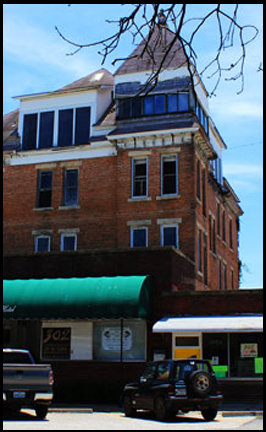
plate 2. The Grand View Hotel, 2013
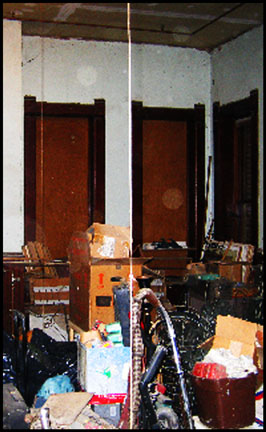
plate 3. Pre-restoration hotel lobby
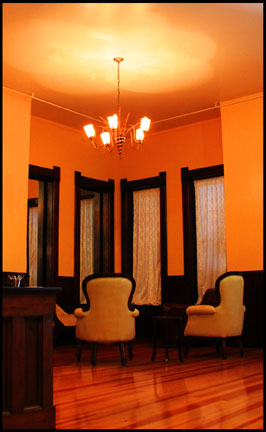
plate 4. Post-restoration hotel lobby
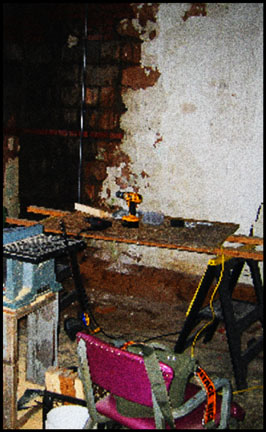
plate 5. The “Chandelier Room” after the turkey frying accident and prior to restoration.
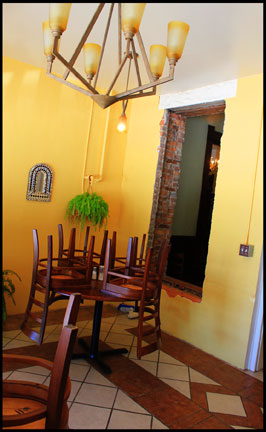
plate 6. The “Chandelier Room” after restoration

plate 7. The Grand Ballroom, prior to restoration.
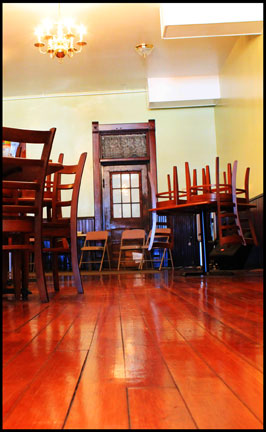
plate 8. Restored Grand Ballroom, now the main dining hall of the 302 Restaurant.
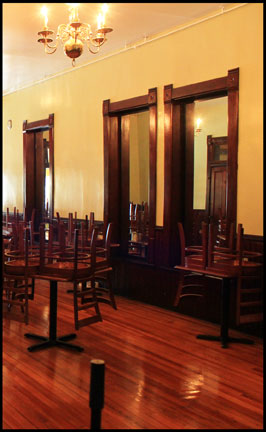
plate 9. Restored Grand Ballroom from a second angle.
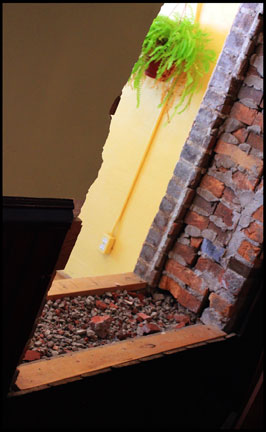
plate 10. A detail shot of the 14-inch-thick brick walls. All brick and lumber was locally created.

plate 11. Unrestored hotel entry.
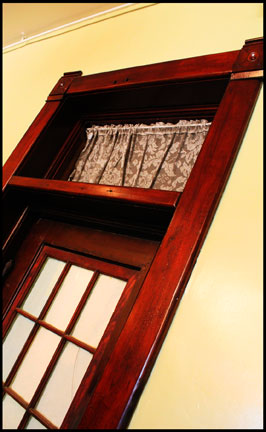
plate 12. Restored dining hall entry
